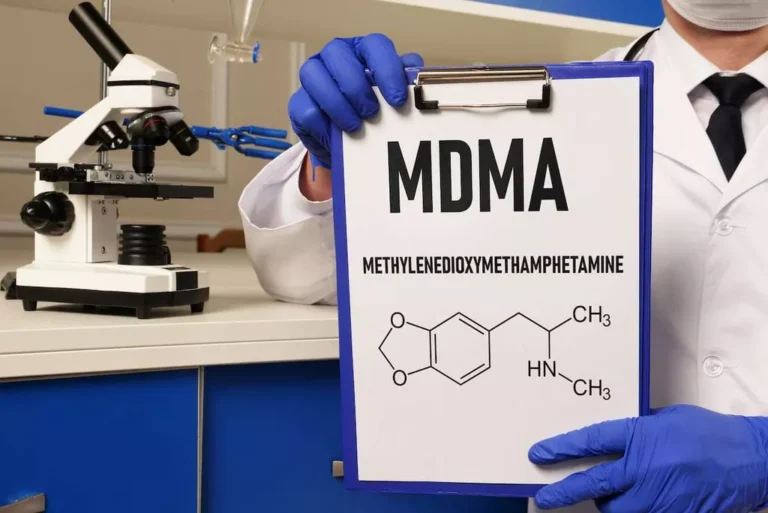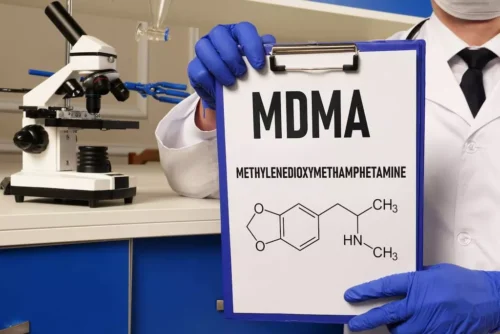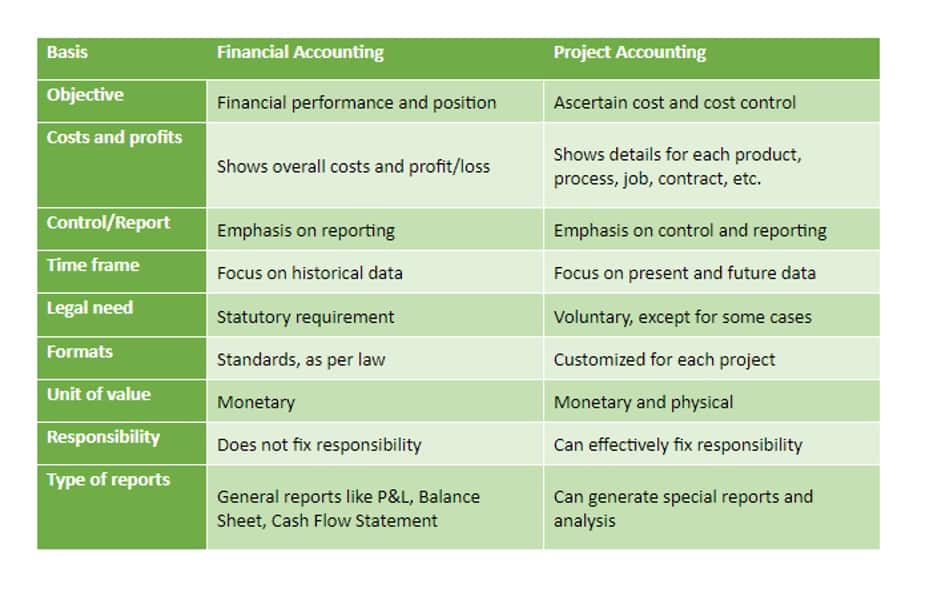Visa Consulting & Coaching Training provide with a great place to Service, whether you are there to burn off some calories or are.

If you feel that you sometimes drink too much alcohol, or your drinking is causing problems, or if your family is concerned about your drinking, talk with your health care provider. Other ways to get help include talking with a mental health professional or seeking help from a support group such as Alcoholics Anonymous or a similar type of self-help group. Some chronic alcoholics develop a condition called Wernicke-Korsakoff syndrome, which results from a thiamine (vitamin B-1) deficiency. The condition, which is sometimes called wet brain, is characterized by eye movement disorders, loss of muscle coordination, confusion and memory issues.
- Screening youth for alcohol use and AUD is very important and may prevent problems down the road.
- They're also more likely to experience social, academic, and legal issues.
- Their actions are dangerous to themselves and others, especially when mixed with stimulants and other drugs that obscure or intensify the effects of alcohol.
- Although benzodiazepines are the primary drug treatment for alcohol withdrawal, your doctor may also use other drugs alongside them.
- The sudden removal of alcohol can cause fatal arrhythmias, where the heartbeat becomes so irregular the heart fails.
Denying Our Mental Health: Why We Do It and How To Move Past It
Addiction can also affect the brain, causing brain damage and cognitive impairment in the end-stage of alcoholism. By the time a person reaches the end stages of alcoholism, drinking has taken over their lives and has likely hurt relationships, work or school, finances, and overall health. If a person tries to quit drinking on their own during end-stage alcoholism, they may experience severe symptoms of withdrawal, including tremors and hallucinations. One of the most severe consequences of alcohol withdrawal is called delirium tremens ("the DTs"), which, if left untreated, can be fatal. Alcohol use disorder (AUD) is a serious condition that can have devastating effects on a person's life, relationships, and health. At this stage, the effects of long-term alcohol use become apparent and more severe, affecting a person's health and quality of life.
Treatment Can Be Life Changing. Reach out today.
- Find rehab for yourself or a loved one by speaking with a treatment provider.
- ” Learn the answer, as well as information about the dangers of alcohol use disorder, below.
- Seeking help for addiction may feel daunting or even scary, but several organizations can provide support.
- Alcoholism also weakens the heart, raising the risk of heart failure, high blood pressure, strokes, and heart attacks.
Moreover, the extreme consequences of alcohol abuse are not diminishing. From 2007 to 2017, the number of alcohol-related deaths in the United States increased by 35%. After ongoing heavy use, the body may develop a physical dependence in middle-stage alcoholism, where they’ll experience withdrawal symptoms if they stop drinking. The National Institute on Alcohol Abuse and Alcoholism define binge drinking as a pattern of drinking that raises a person’s blood alcohol concentration (BAC) to 0.08%.
Alcohol-Free Beer Effects on Cirrhosis of the Liver
Statistics indicate that Illinois may have a significant underage drinking problem though its under-21 death rate has declined in recent years. The death rate from excessive alcohol use in Hawaii is below average, but alcohol-related death is more prevalent among males than anywhere else in the United States (excluding territories). The District of Columbia’s alcohol-related death rate increases faster than any U.S. state’s, and the rate of binge drinkers is very high.
- Over half of alcohol-related deaths are because of health effects from drinking too much over time.
- Over time there is a progression of liver disease from hepatitis (inflammation) to fibrosis (hardening) and eventually to scarring of the tissue (cirrhosis).
Adam Sherk reports institutional support from the Canadian Drug rehabilitation Cancer Society and Canadian Institutes for Health Research. If you or someone you know is misusing alcohol, contact a doctor before stopping use. They can assess your condition and advise you on whether you should complete your withdrawal in an inpatient or outpatient setting. Knowing all the facts helps them to both evaluate your condition and determine an appropriate treatment. With early treatment and prevention, the chance of death from delirium tremens is rare. Of those who develop seizures, about 3 percent may have a more serious type of seizure called status epilepticus.

Patients identified as having AUD should be offered medication as well as psychosocial supports. The Food and Drug Administration has approved three AUD medications as safe and effective. Two, naltrexone (Vivitrol) and acamprosate (Campral), work by reducing alcohol cravings. The third, disulfiram (Antabuse), discourages drinking by causing nausea, vomiting, and similar negative effects if a patient ingests alcohol. Since 2006 the death rate for all ages due to alcohol has increased except in young adults aged 18 to 24.
Who is at Risk of Alcohol-Related Problems?
The next stage of a drinking problem is alcohol abuse, where the person consumes too many drinks each day. While binge drinking is an isolated phenomenon that people do at parties, perhaps only once or twice in their lives, excessive alcohol consumption is a daily habit. Over half of alcohol-related deaths are because of health effects from drinking too much over time. It can lead to things like cancer, liver disease, and heart disease. But drinking a large amount of alcohol in a short period of time can also be deadly.

End-Stage Alcoholism and Associated Health Disorders
Learn how alcoholism impacts health and why alcohol is a leading cause of death in the U.S. Alcohol also inhibits the production of an anti-diuretic hormone, so large quantities of alcohol make you urinate a lot and become dehydrated. This is often made worse by the fact that the heart’s structure changes with long-term alcohol use. The excitatory and inhibitory pathways in the brain control the central nervous how do people die from alcoholism system and heart. Once alcohol is removed, the huge levels of neurotransmitters that are present can overstimulate organs, including the heart.

In its earlier stages, alcoholics suffering from Wernicke-Korsakoff syndrome may be treated through taking Vitamin B-1, proper nutrition and abstinence from alcohol. Even with treatment, some people may not be able to regain full brain function. Lastly, people who start drinking earlier in life have a higher risk of using alcohol excessively or developing alcohol use disorder later in life. Too much alcohol affects your speech, muscle coordination and vital centers of your brain. A heavy drinking binge may even cause a life-threatening coma or death. This is of particular concern when you're taking certain medications that also depress the brain's function.
Data Sources and Measures
Similarly, there are physiological changes as a result of long-term alcohol abuse. A person can consume a fatal dose of alcohol before passing out. Even when the person is unconscious or stops drinking, the stomach and intestines continue to release alcohol into the bloodstream, and the level of alcohol in the body continues to rise. Wyoming has one of the nation’s highest rates of alcohol-related deaths per capita. Binge-drinking is a significant problem in Wisconsin, and alcohol-related deaths are more likely to involve older, long-term users. Underage drinkers are slightly less common among alcohol-related deaths in Washington.
Examples include buildings, furniture, vehicles, inventory, large equipment, and accumulated depreciation. Assets are anything of value your organization possesses or is entitled to, such as cash, pledged donations, property, equipment, investments, etc. The Statement of Financial Position is the Balance Sheet of a nonprofit organization. Starting a nonprofit can be a fulfilling way to make a difference in the community, but it requires careful planning and consideration.
- This ratio measures how effectively a nonprofit collects payments owed to it for goods or services already delivered.
- Besides the terminology, a key difference between for-profit organizations’ equity and nonprofit net assets is that not all nonprofit net assets should be categorized the same way.
- While there are many approaches to assessing and managing your nonprofit’s performance, we’ve outlined some of the core financial ratios you should be aware of.
- Temporarily restricted net assets are a crucial component of a nonprofit organization’s financial position.
- Equity is a measure of the value that shareholders have in the company, reflecting their stake in its financial success and growth potential.
- This breakdown provides insights into the availability and restrictions placed on the organization’s resources.
Back To Basics: Nonprofit Statement of Financial Position
Once you know the financial areas most important to your cause, you can measure your ratio, develop a goal, and strategize to improve it as a KPI. The statement of financial position plays many key roles in your nonprofit’s accounting activities and operations, so it’s important to create and analyze it accurately. Use the information and tips above to accounting services for nonprofit organizations get started, and don’t hesitate to reach out to an accountant if you have any questions or need help along the way. Another related application that isn’t technically required—but is strongly recommended!
Who uses nonprofit financial ratios?
- Fixed assets can also include accumulated depreciation, the amount your fixed assets have decreased in value.
- The statement of functional expenses is described as a matrix since it reports expenses by their function (programs, management and general, fundraising) and by the nature or type of expense (salaries, rent).
- This part of the statement may include expenses related to interest payments, income taxes, and any non-cash transactions.
- Nonprofits can use this report to file Form 990 with the IRS and provide donors with transparency and trust in the organization.
This ratio indicates how many months an organization can continue operations without additional revenue. A commonly recommended guideline is maintaining reserves covering three to six months of operating expenses, as suggested by the Nonprofit Operating Reserves Initiative Workgroup. This buffer allows organizations to manage cash flow disruptions and continue mission-driven activities without interruption. Regular assessments help nonprofits adjust financial strategies to enhance stability and reduce vulnerability. The release of net assets from restrictions has a profound effect on a nonprofit’s financial statements, influencing both the balance sheet and the statement of activities.
Financial Reporting
- In addition to providing internal insights, understanding your organization’s net assets is important for compliance reasons, as they appear on multiple required nonprofit financial reports.
- This includes the cash in your bank account, the furniture and equipment in your office, and the real estate your organization owns.
- The Statement of Activities differentiates between unrestricted, temporarily restricted, and permanently restricted net assets.
- This procedure is discussed in another article , “Reclassing Net Assets in QuickBooks”.
- Nonprofits often establish investment policies that outline their approach to asset allocation, risk management, and spending.
- It’s calculated by subtracting your total expenses from your total revenue and then dividing that amount by your revenue.
Because they are nuanced and complicated, we recommend reaching out to your friendly CPA for more details on long-term time-restricted funds. It may be tempting to narrow in on one section of the balance sheet and make a quick assumption about your organization’s financial health. However, it’s the relationship between your assets and liabilities that tells the whole story. The assets and liabilities of a nonprofit are not much different from those of a for-profit company. Typical assets of a nonprofit entity include buildings, land, cars, furniture and office or other equipment.
Calculating Cash on Hand
If you have multiple endowments, grants or restricted large-dollar donations, it is recommended that you track them each in their own fund. Some organizations choose to track these funds outside of their official accounting structure (like in a spreadsheet), but setting up individual funds can help you establish transparency and accountability. Fund accounting is a system of accounting created to help not-for-profit organizations and agencies manage streams of revenue designated for specific purposes. The Statement of Functional Expenses breaks down expenses by their functional classification, such as program services, management, and general, and fundraising.
How Donors Affect Unrestricted Funds
Unlike for-profit businesses that exist to generate profits for their owners, nonprofit organizations exist to pursue missions that address the needs of society. Nonprofit organizations serve in a variety of sectors, such as religious, education, health, social services, commerce, amateur sports clubs, and the arts. Overall, maintaining a healthy level of liquidity is essential for non-profit organizations to ensure their financial stability and ability to fulfill their mission.
Unrestricted net https://nyweekly.com/business/accounting-services-for-nonprofits-benefits-and-how-to-choose-the-right-provider/ assets are funds that a nonprofit can use at its discretion to support its general operations and any other activities that align with its mission. These assets are not bound by donor-imposed restrictions, providing the organization with the flexibility to allocate resources where they are most needed. This category often includes revenue from membership fees, service fees, and unrestricted donations. Solvency ratios provide insights into a nonprofit’s long-term financial stability and ability to meet long-term obligations. The debt-to-equity ratio, calculated by dividing total liabilities by total net assets, is a key solvency measure.
Equity is an important indicator of the financial health and stability of a nonprofit organization. The unrestricted fund balance, also known as unrestricted net asset balance, reflects the amount available to be used for general operations. For example, when you see a $100,000 balance in this fund, it means that an organization could use this amount for any purpose, with no restrictions. Most expenses are processed and reported in this fund, often presented as a separate column in financial statements.
In addition to financial contributions, donors and funders can also provide valuable expertise, networks, and resources to nonprofit organizations. They can offer guidance and advice on strategic planning, fundraising strategies, and program development. Collaborating with donors and funders can lead to innovative partnerships and opportunities for growth and sustainability.

You’re not alone—let’s work together to https://ecosoberhouse.com/article/what-happens-when-you-stop-drinking-alcohol/ uncover the cause and find a solution. Penn Medicine Becker ENT & Allergy’s nationally recognized allergy specialists bring deep expertise in identifying triggers and advising on care for late-onset reactions. As with histamines, this issue comes down to a depletion of enzymes — in this case, enzymes that are required to metabolize alcohol in the liver.

Lifestyle Quizzes

Certain types of cheese such as blue cheese, cheddar cheese, and parmesan cheese can also contain high levels of histamine. If you're experiencing allergy-like reactions after consuming cheese, try switching to a low-histamine variety such as mozzarella or feta. If you're experiencing a hangover, there are several things you can do to alleviate your symptoms.
- On the other hand, if you suffer from allergies that are heightened by alcohol intake, Dr. Steven says your best bet to start would be to address the root of the problem.
- Examples of conditions that can cause it or sensitivity are outlined below.
- Some alcoholic beverages contain gluten due to the use of grains during the brewing process.
- These include worsening of existing allergies, anaphylaxis, and impact on quality of life.
Avoid alcohol if you have an allergy to grains or other foods.

Additionally, individuals with other types Substance abuse of allergies, such as a drug allergy, may also be at a higher risk of developing alcohol allergy. For instance, individuals with food allergies may experience more severe reactions after consuming alcohol, as it can lower their threshold for an allergic response. Similarly, alcohol can exacerbate asthma symptoms, leading to increased wheezing and difficulty breathing.
Health Conditions

Additionally, dehydration can compromise the immune system and exacerbate inflammation, making allergic-like reactions more severe. If you’re a seasonal allergy sufferer, you know all about histamine, a chemical compound that can trigger inflammation and allergic reactions. Living with an alcohol allergy involves making lifestyle adaptations like total abstinence from alcohol and being vigilant about potential alcohol content in food and medication. This post provides guidance, but it’s no substitute for professional medical advice.
Although alcohol intolerance usually isn't a serious issue as long as you don't drink alcohol, you might want to discuss it with your doctor at your next appointment. Here's some information to help you get ready for your appointment. Alcohol-induced hives can last anywhere from a few minutes to several hours, depending on the severity of the reaction and the individual's response.

- This can be dangerous, especially when driving or operating machinery.
- However, it can trigger or worsen symptoms in individuals with pre-existing allergies.
- An alcohol allergy may manifest as facial redness, hives, or a skin rash.
- It’s essential to differentiate between alcohol intolerance and alcohol allergy.
It occurs when the body is unable to break down acetaldehyde, a toxic byproduct of alcohol metabolism. This leads to a buildup of acetaldehyde in the body, which can cause flushing, rapid heartbeat, and alcohol allergy other symptoms. Many people with alcohol intolerance experience flushing, or redness in their face or other parts of their body. This occurs when the blood vessels near the surface of your skin widen, causing increased blood flow and heat. The online discussions on this phenomenon range from catching a closet drinker in the act to a life-threatening allergy situation (please, carry an epi-pen in this case). Some say it is more about the type of beer (too many hops) than a reaction to the alcohol in beer.

This can help to lower their tax liability and increase their after-tax income. In general, anyone who is looking to reduce their tax liability and improve their financial situation can benefit from tax shields. It's important to note that tax shields are subject to tax laws and regulations. Taxpayers must comply with these laws and regulations to ensure that the deductions and credits claimed are valid and that they are not subject to any penalties or fines for non-compliance. It's always a good idea to consult with a tax professional or accountant to ensure that you are taking advantage of all available tax shields and complying with tax laws.
Quick Note: What is Debt?
The factor of (1-t) reduces the debt component which results in a lower WACC which Medical Billing Process in turn results in a higher present value of net cash flows. Let us take the example of another company, PQR Ltd., which is planning to purchase equipment worth $30,000 payable in 3 equal yearly installments, and the interest is chargeable at 10%. The company can also acquire the equipment on lease rental basis for $15,000 per annum, payable at the end of each year for three years. The original cost of the equipment would be depreciated at 33.3% on the straight-line method. The concept of depreciation tax shield would not be relevant in a country, state or province whose tax jurisdiction does not permit companies to use depreciation as a tax admissible expense.

How Is Tax Shield Interest Calculated?
- MACRS depreciation table will assist you to accelerate cost recovery benefits easily.
- Since depreciation is a non-cash expense and tax is a cash expense there is a real-time value of money saving.
- For example, if a company has cash inflows of USD 20 million, cash outflows of USD 12 million, its net cash flows before taxation work out to USD 8 million.
- Since interest payments are tax-deductible, the cost of debt needs to be multiplied by (1 – tax rate), which is referred to as the value of the tax shield.
- Taxpayers can deduct state and local income, sales, and property taxes from their taxable income.
- A tax rate can be understood as a fraction at which a single or corporation pay tax or dues.
Meanwhile, the company maintains its own depreciation calculations for financial statement reporting, which are more likely to use the straight-line method of depreciation. This alternative treatment allows for the use of simpler depreciation methods for the preparation of financial statements, which can contribute to a faster closing process. The shortened definition of a Tax Shield is any item that can lower taxable income while also lowering the taxes a person must pay.
Examples of Tax Shield
Tax credits are offered for a variety of purposes, such as investments in certain industries, research and development, and energy efficiency. A 25 % depreciation for plant and machinery is available on accelerated depreciation basis as Income tax exemption. Assume that the corporate tax is paid one year in arrear of the periods to which it relates, and the first year’s depreciation allowance would be claimed against the profits of year 1. For example, if a company has an annual depreciation of $2,000 and the rate of tax is set at 10%, the tax savings for the period is $200. We note from above that the Tax Shield has a direct impact on the profits as net income will come down if depreciation expense is increasing, resulting in less tax burden. We note that when depreciation expense is considered, EBT is negative, and therefore taxes paid by the company over the period of 4 years is Zero.

Therefore, the tax shield can be specifically represented as tax-deductible expenses. The sum by which depreciation shields the taxpayer from income taxes is the appropriate tax rate. Anyone depreciation tax shield preparing to use the depreciation tax shield should deliberate the use of accelerated depreciation. A tax shield represents a reduction in income taxes which occurs when tax laws allow an expense such as depreciation or interest as a deduction from taxable income. Depreciation tax shields are important because they can improve a company’s cash flow by reducing its tax liability. They also make capital-intensive investments more attractive because the higher the investment in depreciable assets, the greater the potential tax shield.
Depreciation Tax Shield Calculation Example
For Scenario A, the depreciation expense is set to be zero, whereas the annual depreciation is assumed to be $2 million under Scenario B. In the final step, the depreciation expense — typically an estimated amount based on historical spending (i.e. a percentage of Capex) and management guidance — is multiplied by the tax rate. The recognition of depreciation causes a reduction to the pre-tax income (or earnings before taxes, “EBT”) for each period, thereby effectively creating a tax benefit. Under U.S. GAAP, depreciation reduces the book value of a company’s property, plant, and equipment (PP&E) over its estimated useful life. With over 20 years of experience, TaxShield and our Chartered Quantity Surveyors have completed tens of thousands of reports.
The tax shield significantly influences capital structuring decisions by reducing taxable income and lowering the cost of capital. When deciding between debt or equity financing, the tax shield often makes debt more attractive due to its tax-deductible interest payments. Depreciation tax shield can dramatically impact the NPV of a proposed project, especially when the company’s tax rate is higher and the project involves the use of costly fixed assets. Commercial entities extensively tend to outsource their tax returns task to tax firms. These independent tax firms keep themselves update to deal with all tax fixed assets related matters and have special expertise in preparing tax returns for almost all types of companies and individuals. They evaluate all permissible depreciation methods and choose the one that results in maximum depreciation tax shield for the tax returns of their client company.

Why Does the Depreciation Tax Shield Matter?

Alongside her accounting practice, Sandra is a Money and Life Coach for women in business. Not only are you paying the principal balance, but you're also responsible for the interest. You can figure out what the cost of debt is by multiplying the value of your loan by the annual interest rate. By comparing the above two options calculated, we concluded that the present value in the case of buying by taking a tax shield is lower than the lease option. With the two methods clarified, let’s look at the Cash Flow impact of each approach.

Here are some of the main benefits that you’ll find from using the direct method for cash flow statements. Using each of these values, you will prepare the operating section of the cash flow statement, resulting in a net cash flow from operating activities. Although most standard setting bodies prefer the direct method, companies use the indirect method almost exclusively. It’s easier to prepare, less costly to report, and less time consuming to create than the direct method.
Less Time-Consuming
The direct method uses cash-basis accounting, which records earnings and expenses only when they are received and paid, respectively. By https://www.bookstime.com/articles/forensic-accounting focusing solely on cash in hand, a direct cash flow statement presents the most straightforward view of a company's cash position. It also suits small businesses and start-ups, which need to know exactly how much cash is available so that they can pay their bills on time. The operating activities section is the only difference between the direct and indirect methods.

Preparing a Direct Method Cash Flow Statement

The direct cash flow method, also known as the income statement method, focuses on presenting a business’s actual cash inflows and outflows. This method requires a detailed breakdown of cash receipts and payments from various activities, such as operating, investing, and financing. Because it is aligned with existing financial statements, an indirect cash flow statement is faster and net sales easier to verify and audit as well.

Direct vs. Indirect Cash Flow Method Head to Head Differences
- Financing Activities are those activities which result in a change in the size and composition of owner’s capital and borrowing of the organisation.
- The software’s scenario planning capabilities allow for proactive assessment of various cash flow scenarios, enhancing financial resilience and enabling strategic decision-making.
- Additionally, the regulations your business is subject to could determine which method you will need to utilize.
- The second adjustment was to subtract the $10,000 increase in accounts receivable from net income, since this means that the company received $10,000 less in cash from customers than it earned in revenue.
- Financial reporting plays a vital role in assessing the health and performance of a company.
- These adjustments convert the accrual-based net income to the net cash flow from operating activities.
It’s the more commonly used method cash from operating activities differs between the direct and indirect method with respect to the: in financial reporting, particularly for public companies. This means most financial analysts, investors, and stakeholders are accustomed to seeing it, making comparisons easier across companies and industries. Smaller organizations with a limited number of transactions each month can likely manage the level of tracking and detail that the direct method requires for accuracy. You do not need to go through each transaction during the period to determine its impact on the cash balance for the business.
- This method provides a clear view of cash transactions and is often considered more intuitive for users of financial statements.
- The indirect method starts with net income and adjusts for non-cash transactions, changes in working capital, and other items to arrive at net cash flow from operating activities.
- While the two methods only apply to the operating section of the cash flow statement, the method you choose to utilize will have important implications for your business.
- Cash outflows or operating expenses include salaries, payments to suppliers, income tax, and utilities.
- The indirect method lacks such deep insights since the net cash flow metric is indirectly calculated from the other financial statements.
- The company paid $150,000 in cash to suppliers for inventory, $75,000 in cash to employees, $25,000 in cash for rent and utilities, and $10,000 in cash for taxes.
- As we explained in a previous article, 'What Is A Cash Flow Statement And How Do You Prepare One?
- The direct vs. indirect cash flow method is useful at different points, and it can be used depending on the situation and the requirement.
- One essential aspect of financial reporting is cash flow analysis, which helps stakeholders understand the cash movement within an organization.
- The software also provides intuitive financial statements, helping you predict future cash needs, avoid potential shortfalls, and make smarter financial decisions.
- The direct method requires detailed tracking of every cash transaction, which can be labor-intensive.
The direct method of preparing a cash flow statement shows cash inflows and outflows directly by listing specific cash transactions. It’s a straightforward way of presenting how cash is received and spent during a period, without adjusting for non-cash transactions. Regardless of the method chosen, the cash flow statement remains a critical tool for assessing a company's financial health, liquidity, and operational efficiency. As future accounting professionals, students should focus on developing a deep understanding of cash flow analysis and its implications for business decision-making.


Along with showing the changes in the Cash Position of an organisation, it also depicts the reasons for such change during the period. Unlock returns on your money with seamless access to your funds whenever your business needs it. This content is presented “as is,” and is not intended to provide tax, legal or financial advice.

